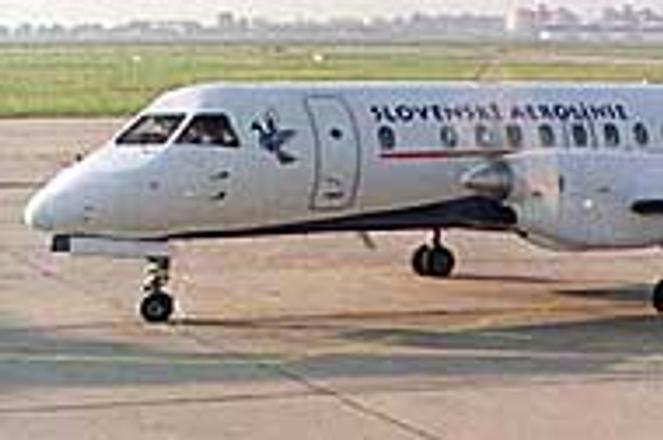BRATISLAVA airport has capacity to spare, say experts.photo: TASR
BRATISLAVA's air, rail and river transport infrastructure could, if developed, turn Slovakia's capital into a transport gateway to eastern Europe, according to a team of aviation experts assembled by a US congressman.
The team, united by Florida Republican John Mica, included high-level executives from aviation giant Northrop-Grumman, engineering consultancy and airport developer Arup and aviation security consultancy Glenealy International.
"With only modest investment, the [Bratislava] airport could cater to long-haul flights and become a well-equipped European-standard international airport," team leader David Bilcliffe of Glenealy found in the group's report, released at the end of May.
"Exploiting that standard would require a more commercial approach that would drive down costs, market the airport to EU and US airlines, and use the airport as a transport gateway both to stimulate local companies, and attract new business to the country," the report continues.
Rep. Mica, who chairs the aviation subcommittee in the US House of Representatives, assembled the four-member panel after meeting Slovak Transport Ministry and Airport Authority officials in Washington on May 1. Two weeks later, they visited Bratislava's M. R. Štefánik airport, along with local government and aviation officials.
In their report, the team stresses the need for private-public sector cooperation in developing and promoting Slovakia's stagnant passenger air industry, and doing it in connection with rail and river cargo transport.
To do this, they suggest that Bratislava set up an Urban Development Corporation (UDC) - a public-private joint venture that would oversee the commercial operation of the airport and its connection to other transportation infrastructure.
According to the team's findings, the UDC would be charged with "procuring inward investment into a well-defined geographical area, in accordance with a strategic urban master plan. This investment would both stimulate, and be stimulated by, air travel and other transport activity, and thereby provide a mutually reinforcing catalyst for development."
There is a clear need to develop Slovakia's air industry - aside from a single regular flight to Zurich and a seasonal link to Venice operated by the recently opened local discount carrier Sky Europe, Bratislava's airport offers no regular EU or North American destinations, and no major international airlines conduct routes through Slovakia.
Despite the construction of a new passenger terminal in 1994, connected to the original terminal built in 1971, Bratislava's Milan Rastislav Štefánik airport has seen little upward development during the last decade (see chart, right).
Though it reached a profit of Sk8.8 million in 2001, and saw passenger numbers increase three per cent to 293,000, international charter passengers accounted for over half that number. The airport is designed to handle 1.8 million people per year.
With Sky Europe's success and increasingly congested runways at nearby Vienna's Schwechat airport, Bratislava may become a more attractive access point to central Europe.
"Compared with London's Gatwick [an airport smaller than Bratislava's but which handles over 28 million passengers per year], it is clear that the Bratislava airport is a very underutilised asset," the team concluded.
While creating a UDC will have to wait until after September elections, Sky Europe is showing that there is a demand for passenger air in Slovakia, having recorded nearly 11,500 passengers, or 60 per cent of capacity, over their first 100 days in operation.
Since launching service in mid-February to Slovakia's second-largest city, Košice, Sky has expanded its fleet to three 30-seat aircraft and initiated regular service to Prague and Zurich, as well as seasonal service to Venice and the Croatian coast.
"We proposed ourselves a similar [UDC] scenario based on the successful example of the Shannon Free Zone in Ireland, and therefore we can only support this plan," said Sky Europe CEO Christian Mandl.
However, Mandl said "the UDC concept is realistic only if there is strong political support for it."
While crediting the present airport infrastructure and its potential for development, Mica's team advised "that a more commercially oriented management would be able to drive down costs, thereby generating resources for a concerted marketing drive aimed at attracting one or more established international carriers to Bratislava."
Mandl said that development of the Bratislava airport, and air travel in Slovakia in general, required planners to "address more commercial issues, such as high airport charges and fuel prices at Bratislava Airport.
"Pratical steps such as a shuttle bus to and from Vienna, a fast-track lane at the border, or the acceptance of ID cards instead of passports for EU citizens would also facilitate the development of Bratislava airport as a secondary airport to Vienna," said Mandl.


